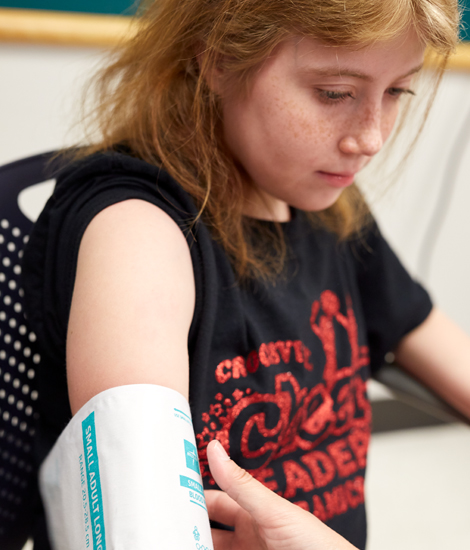New Clinic Streamlines ABPM, Increases Utilization
The new Ambulatory Blood Pressure Monitoring (ABPM) Clinic at Cincinnati Children’s led to a 40 percent increase in patient utilization in just one year.

Previously, nephrologists at Cincinnati Children’s initiated ABPM during an appointment in the pediatric nephrology clinic. Families were not always ready to begin monitoring right away, which led to delays. In addition, they were asked to return the device by express mail, which did not always happen in a timely fashion. Devices were sometimes not available when needed, and some were lost.
Now, specialists and primary care physicians can order ABPM without a nephrology consult, using the same process they would to order an X-ray or blood test. Families schedule their appointment in the ABPM Clinic when it is convenient for them to begin 24-hour monitoring. During the appointment, a nurse initiates ABPM. After monitoring is complete, a courier picks up the device at a location that is convenient for the family (home, work, etc.) and returns it to Cincinnati Children’s.

Total turnaround time can be as fast as four business days, and ABPM devices are back in circulation quickly. Last year, 153 nephrology patients participated in ABPM, compared to 111 in the previous year. Results are consistently reported in the patient chart and to the ordering physician within 10 days of the initial clinic appointment.
“24-hour BP monitoring is the gold standard for assessing blood pressure in children and adolescents with chronic kidney disease, or CKD,” explains Mark Mitsnefes, MD, a pediatric nephrologist at Cincinnati Children’s. “Undiagnosed and therefore untreated hypertension is one of strongest risk factors for CKD progression in children.”
Mitsnefes explains that ABPM is important because it can help to diagnose masked hypertension, a condition in which blood pressure is normal during an office visit, but elevated outside the clinic during the day or at night. ABPM also is the best method to rule out ‘white coat hypertension,’ which may affect 30 to 40 percent of pediatric patients who are found to have high blood pressure at the doctor’s office.
“This dedicated clinic allows us to serve more patients and ultimately provide a more reliable, predictable and convenient mechanism for ABPM,” Mitsnefes says. “We plan to expand this methodology to children with other chronic conditions, such as Type 2 diabetes mellitus, Turner syndrome and coarctation of the aorta.”
- MARK MITSNEFES, MD

